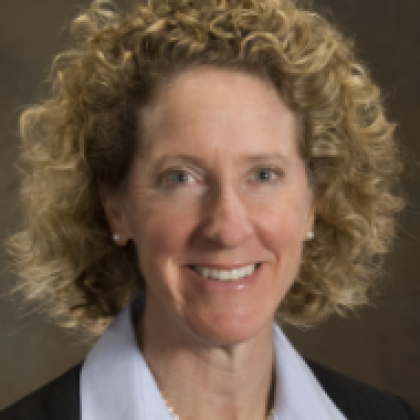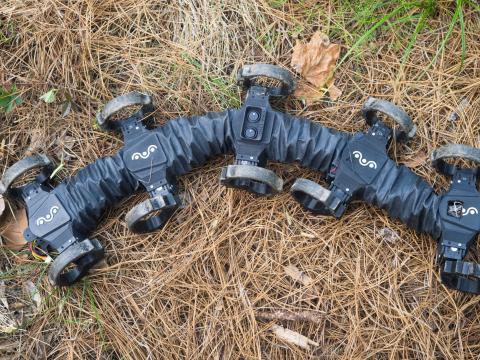Supporting U.S. Quantum Technology Development

While technology consortiums to advance emerging technologies are not new, the Quantum Economic Development Consortium (QED-C), headquartered in Arlington, Virginia, is unique. The QED-C is a first-of-its-kind public-private partnership consortium with government agencies, universities, national laboratories and the private sector, all coming together to advance quantum technologies and build an industry ecosystem, explained Celia Merzbacher, executive director of the QED-C, in a recent interview.
SRI International, the nonprofit scientific research institute in Menlo Park, California, manages the QED-C. The consortium currently has 270 members.
“The unique aspect is that QED-C was conceived initially by government as directed by Congress in the National Quantum Initiative Act in 2018,” Merzbacher noted. “And if you go and read that legislation, it directed the consortium to identify gaps and strategies for filling the gaps. We are really focused on bringing together the entire ecosystem that is going to be needed to realize quantum technology for all kinds of benefits, whether it is for government customers, private customers, for national security or economic benefits, the whole range.”
The QED-C identifies priority areas for investment—to address technology, workforce, standards and nontechnical gaps—for quantum development. Funding could come from the government, the public sector or from private investors for investments in basic research, early-stage innovation and moving technologies into real applications. The consortium coordinates within the U.S. quantum ecosystem for the organizations or companies to then fill the gaps.
“Over the last five and a half years, we have really built a community of all of the different stakeholders,” she noted. “All government agencies are considered part of the consortium, and we have a membership model for nongovernment entities to be engaged in and participate and benefit.”
The consortium also is emphasizing an international footprint, supporting U.S. quantum-related companies in markets abroad, said Merzbacher. The QED-C estimates that revenue from the global quantum industry has already reached $1.45 billion in 2024.
A recent trip to Australia by the QED-C in April brought a delegation of American companies that want to do business with the Australian government and their customers, with Australian companies, and in partnership with Australian quantum companies and researchers.
“Australia is doing a lot in quantum, it turns out, so we are doing more outreach,” the executive director explained. “It is a global community, really, that’s going to be responsible for developing quantum technologies, and we are an increasingly global organization, so that’s an area where we are also spending a little more time and effort.”
Also, the consortium collaborates with NATO and other international quantum organizations. The executive director is part of the NATO delegation of the Transatlantic Quantum Community, a new NATO activity in quantum that began last November, and Merzbacher had planned to attend the May meeting. The forum presents quite an opportunity, she said.
“The meeting is a little bit different for NATO in that it includes quantum industry players, which is why they invited the QED-C to be part of it,” Merzbacher clarified. “That is an opportunity for the quantum companies, and especially the small companies that don’t have a lot of resources, and the business development teams from all over the world, to meet with the NATO member states who might be interested in using their technology as a solution for defense or government purposes. I think it will be interesting to explore how to bring the private sector solutions to those government problem sets. I think that the government is going to be an early customer, as it often is, for new technologies, and that is going to be a forum for bringing together a pretty broad community of not only the NATO member states, but also affiliates, including Japan and Australia.”
Back home, under President Donald Trump’s government, Merzbacher sees continuing support. “And of course, we have the Trump 2.0 administration, and it is still to be determined exactly how that will play out, but I will say that all the signals that we are seeing suggest that quantum is going to be a priority,” she stated. “And that is not a surprise, because it was the first Trump administration that signed the bill in the first place. And I think they remain committed to this particular area as a priority.”
Merzbacher emphasized that supporting U.S. research and the U.S. quantum industry was crucial. China is already leading public investment in the quantum sector and in the number of patents filed, according to the QED-C’s annual 2025 State of the Global Quantum Industry Report. More than 50% of all quantum-related patents filed between 2020 and 2024 were attributed to China, approximately four times more than the United States, the report indicated.
For development in the United States, the QED-C has identified many use cases across quantum computing, communications and sensing capabilities. “We have a number of standing committees that are focused on the different gap areas, and one of them is this question of use cases and what will quantum be good for,” the executive director explained. “We bring together both the end users of a particular sector as well as the quantum technology developers to identify what are the sort of problems that people in transportation and logistics have, for example, and then how could quantum help.”
For the transportation and logistics industry, the consortium found that quantum computing, in particular, “offers intriguing solutions” for supply chain, transport and logistics problems above what traditional computing cannot solve completely, according to a 2024 assessment report by the QED-C.
Quantum computing could be applied to the use cases of inventory, warehousing and labor plan optimization, across many facilities; route planning; minimization of manufacturing costs; last-mile delivery; factory and truck scheduling; dynamic pricing algorithms; fleet management and maintenance; sustainability and green logistics; energy systems; control of autonomous vehicles; and advanced navigation.
“Quantum computing offers the possibility of significantly faster computations, with applications in all modes of the transportation and logistics industry—air, land, and sea,” the report indicated.
Regarding quantum sensing, perhaps the next most robust quantum technology, the QED-C examined in another report many use cases for quantum sensors, including:
- Magnetic navigation for resilient, unjammable position, navigation and timing (PNT)
- Precision timing for pace-based networks
- Small satellite orientation and alignment
- Battery optimization
- Biomarker detection
- Earthquake detection and prediction
- Undersea maintenance and protection
- Climate monitoring
- Tracking trains in tunnels.
“Quantum sensors have the potential to greatly enhance PNT capabilities by allowing them to function even when satellite-based systems like GPS are disrupted or unavailable,” Merzbacher stated in the report. “This will play a vital role in a range of situations.”

We are really focused on bringing together the entire ecosystem that is going to be needed to realize quantum technology for all kinds of benefits.
In addition, when applied to the biomedical field, quantum sensor technologies could lead to more efficient and more accurate medical diagnoses, less invasive techniques and more data to aid pharmaceutical research, another QED-C assessment found.
Four of the most common areas for clinical use of quantum sensors include: infectious disease, cancer, drug metabolism and diagnostics applications, according to the consortium. In particular, the sensors could be applied to subcellular imaging, systemic disease detection, brain imaging, tissue oxygenation imaging, biophoton detection for disease diagnostics and microbiome analysis.
Quantum sensors could also advance cancer research, such as in studies of cells and cell temperature dynamics. “When it comes to biomedical use cases, quantum sensors could have a dramatic impact on improving the lives of patients,” Merzbacher noted.
Notably, the consortium is also supporting research and development into cryogenic technologies that are needed to advance quantum-based systems. These technologies, which operate in very low temperatures—under -238 Fahrenheit—are critical components of many quantum systems. Four QED-C members, including FormFactor, Northrop Grumman, Quantum Opus and Triton Systems, are working on four separate cryogenics research programs, the consortium stated.
A robust workforce will be needed to support the quantum ecosystem, Merzbacher advised, noting that the quantum industry does not just need those with doctorate degrees. The burgeoning industry needs people in marketing, sales, contracting, program management, etc.
“One of the findings from our workforce development study is that you won’t necessarily need a quantum degree,” the executive director said. “We are transitioning away from a period when most of the people who got hired in the quantum industry, especially by the smaller companies and startups, were Ph.D.s. But as the industry becomes more mature, we are seeing that they need more master’s degree-level, undergraduates and technician-level people.”
People who have at least a low level of familiarity with quantum issues could be relatively easily brought up to speed if they were hired by a quantum company, until companies find more people with hands-on quantum experience. Companies are also pulling workers from adjacent fields that have shared skills, such as from microelectronics, semiconductors or photonics, and then relying on in-house training to bring them up to speed, according to the QED-C.
In addition, the industry will need quantum technicians across several roles such as system and component fabrication, assembly, characterization, testing, operation and maintenance. “There is a clear need to start developing this workforce now,” Merzbacher noted. “And a more coordinated approach, specifically geared toward filling the quantum workforce pipeline, could increase productivity and progress, especially in small companies.”
And although the QED-C is not a standards body, many of its officials do participate in standards development, the executive director mentioned.
“We have an active standards committee, and they are talking about the fundamentals needed for standards, such as ‘how do you measure performance of a quantum system,’” Merzbacher said. “They are also considering the benchmarks you might use to track technology development, so that when you do standardize, you have the understanding of how the technology would benefit from standards.”
One of the most visible organizations that some of the officials are participating in is the Joint Technical Committee of the International Organization for Standardization (ISO) and the International Electrotechnical Commission (IEC).
“The IEC and ISO are two big international standards bodies, which are significant centers of standards activity, and they now have two joint technical committees, including one on quantum,” she stated.





Comments